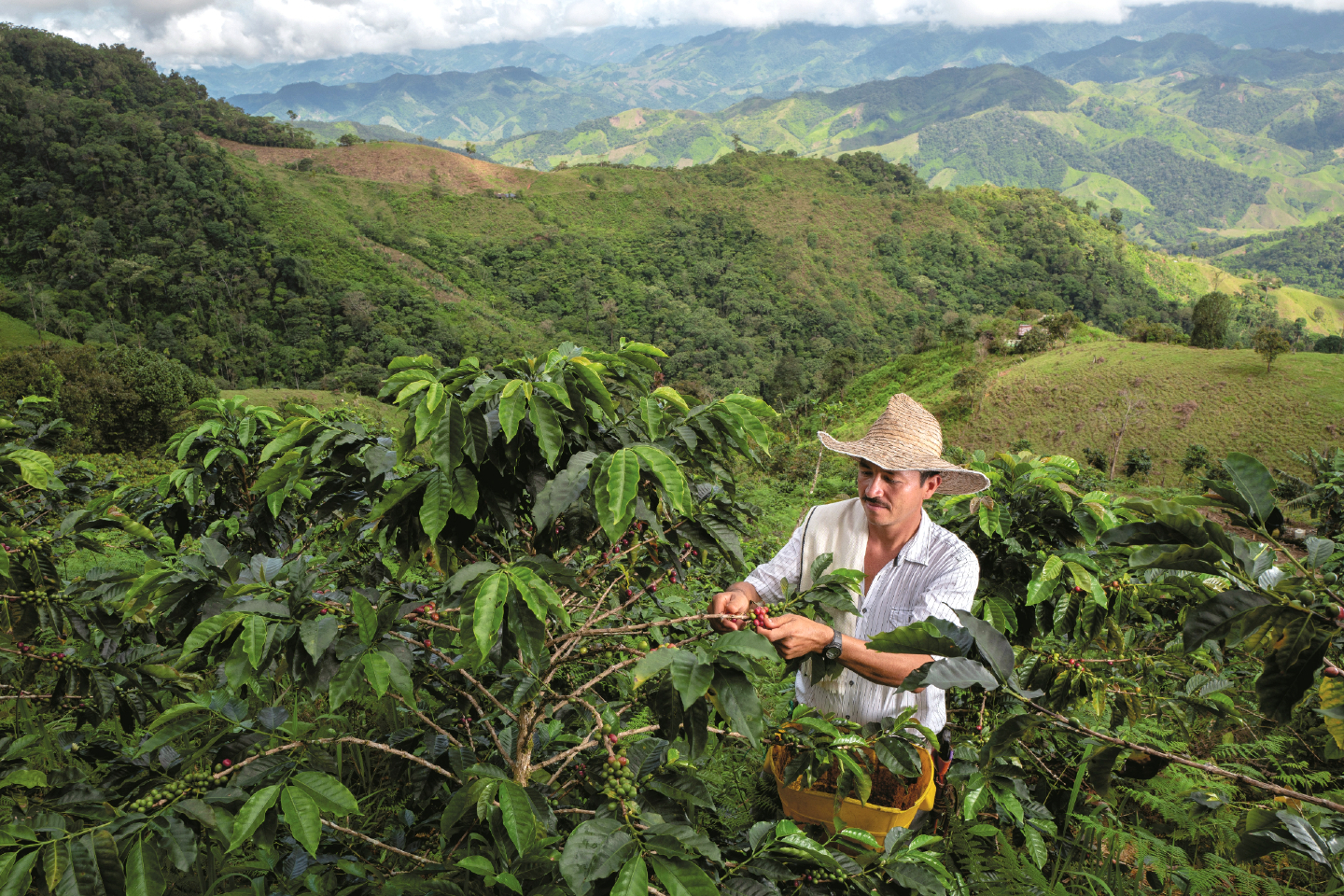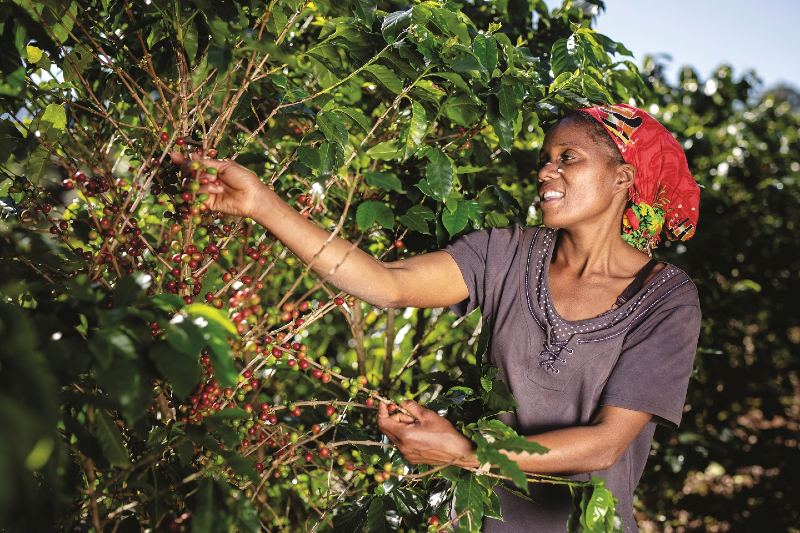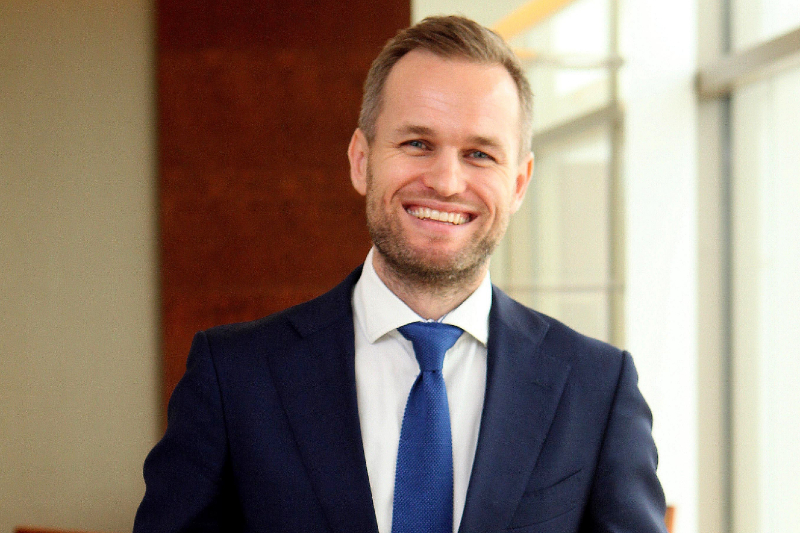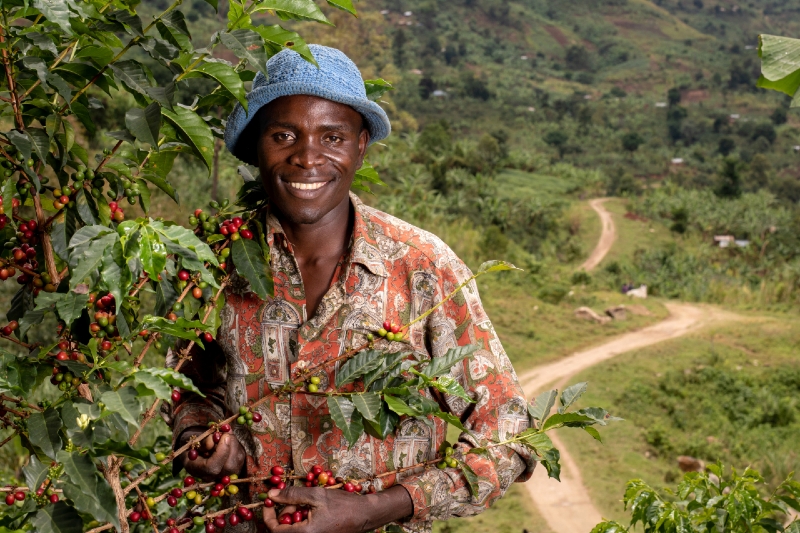
Colombian farmer Don Fernando harvesting coffee fruits in the region of Caquetá (Photo: Nespresso)
Single-serve portioned coffee has previously come under fire for being less than ideal for the environment, with much of the furore directed at the tiny aluminium pods they come in. This concern is valid, of course, but what we sometimes forget is that the sustainability issues surrounding this type of coffee are related to the coffee growers as well, which affects the industry in general rather than individual brands. At present, over 90% of the world’s coffee production takes place in developing countries, while consumption happens mainly in industrialised economies.
Sustainable agricultural practices and fairly traded produce is the solution for much of the issues that plague entire supply chains — are you listening, oil palm dissidents? — and Swiss coffee company Nespresso has been doing its bit since 2003 to fund, encourage and promote fairly traded and high-quality coffee through the AAA Sustainability Quality programme. It was developed with the Rainforest Alliance to create a sustainable supply of high-quality coffee while improving the lives of communities that grow it. Incidentally, all the aluminium used in Nespresso pods can be recycled — a major thrust for the company.
Two years ago, Nespresso launched the Choices We Make campaign under the AAA umbrella as a means to connect coffee drinkers to the farmers who painstakingly grow the crop in their daily cuppa. Touchingly, it highlighted three individual farmers in Colombia whose lives were positively impacted from Nespresso’s intervention. “The aim of the campaign is to tell the authentic, honest tale of partnership that has led to more than a unique cup of coffee,” Geoffrey Dalziel, business executive officer of Nespresso Malaysia, told Options when it was unveiled.
coffee_farmer_jesca_harvesting_coffee_fruits_on_the_eastern_highlands_of_zimbabwe_2.jpg

Recently, another AAA initiative has been launched that seeks to raise the game on the work that has been done in the sustainability space. Through the new Reviving Origins initiative, Nespresso aims to restore coffee agriculture and local coffee economies in regions affected by adverse circumstances by helping farmers improve coffee quality and productivity, and embed sustainable farming practices. This provides local farmers with valuable opportunities for survival while offering consumers a chance to savour the coffee from these regions.
“We started working on the concept for Reviving Origins in Zimbabwe and Colombia in 2017, and moved to Uganda the following year,” Dalziel begins. “As the name suggests, we wanted to revive coffee-producing areas that have, for various reasons, stopped doing so. These communities have typically had to deal with environmental disasters, civil unrest and conflict or economic hardships that have forced them away from coffee-growing. Each community faces different headwinds, so we have had to work with them in very different ways to reintroduce coffee-growing activities.”
The initiative has resulted in distinctive single-origin coffees from all three countries, where Nespresso provides continuous training on high quality and productivity as well as free technical assistance through its AAA agronomist network, tailoring its approach for each area to help coffee farming communities overcome the specific challenges they face. By planting the seeds for sector revival, Nespresso is growing a sustainable coffee future and bringing lasting stability to farmers, their families and their communities.
20160520_peo_nespresso_biz_dev_manager_groffrey_dalziel_pg-21_1.jpg

Reviving Origins has started showing success in Eastern Zimbabwe and Caquetá, Colombia, two regions in which coffee production has been under threat in recent years. In Zimbabwe, coffee production fell from 15,000 tonnes in the late 1980s to just 500 tonnes in 2017, owing to an economic collapse. In Colombia, almost 50 years of conflict led many farmers to abandon their lands and coffee almost disappeared from Caquetá and El Rosario. Today, production of AAA high-quality coffee has increased in both regions — up 9% in the Manicaland province of Zimbabwe and 10% in Caquetá.
“When you [revitalise] a vibrant industry, something that’s part of the heritage of a certain region, the benefits can be quite significant — there is the increased infrastructure that comes with coffee growing, the development in housing, the additional effort put into education, and also healthcare,” Dalziel observes. “Coffee is not a large-scale crop; it’s often planted by individual farmers, on family-run farms passed down from generation to generation.”
Taste-wise, the three new Grand Crus have seamlessly fit into Nespresso’s existing range of flavours as limited-edition varietals. Amaha awe Uganda carries sandalwood notes and floral flavours with medium acidity, Tamuka mu Zimbabwe bursts with complex fruitiness and red berry notes, and Esperanza de Colombia is a mild, balanced coffee with yellow fruit notes and hints of cereals. By helping farmers continue to increase the quality and yield of harvests, the Reviving Origins initiative can achieve its long-term aim of establishing these exceptional coffees as permanent blends.
“Nespresso has a wide variety of coffees; so, we appeal to a wide audience and, as pioneers of this space, we have found that people are getting more knowledgeable, not just about the flavour profiles but also the story behind each one. That’s where the Reviving Origins initiative really resonates,” Dalziel muses. “We have core products that have been part of the line-up for over 30 years, and we also have limited-edition coffees like this, which also generates a lot of interest. As we continue to be a reference for innovation in the industry, Reviving Origins is a piece of our story that complements what we already do.”
nespresso_reviving_origins_1.jpg

Globally, the appreciation for coffee is starting to resemble the way a single malt or fine gin is considered — there is growing interest in heritage, pedigree and origins. This is good news for the industry, because it means stricter regulations and increased emphasis on sustainable business practices.
“We’ve gone from coffee being a purely functional beverage — you either have it black or white — to something we recognise subtle flavours in, whether it’s fruity or floral or cereal. The next step is asking where one’s coffee is from, the story behind the terroir and the farmers,” Dalziel says. “With Tamuku mu Zimbabwe, for example, we’ve incorporated blockchain technology so you can trace your coffee from its harvest in Africa to the point where it is processed in Switzerland. We do this because this is what people want to know about, and it’s a story we are so proud to tell.”
Reviving Origins is not just about a new coffee that the company is able to introduce. It is also a narrative of the stunning terroir of these regions, the often-heartbreaking stories of why families have had to abandon a historically significant agricultural practice and, most importantly, the hardworking people who farm this precious crop for the pleasure of consumers they will most probably never meet.
This article first appeared on June 29, 2020 in The Edge Malaysia.


